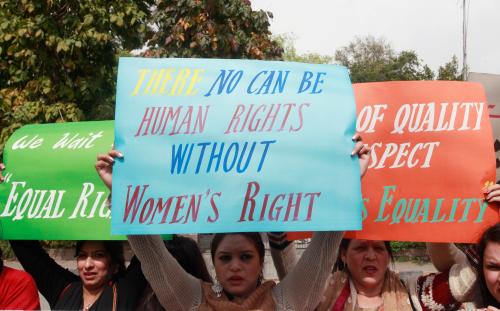Academics, governments, and international institutions are increasingly using subjective well-being metrics as tools for analysis and as complimentary gauges of economic and social progress. They provide new tools for informing policy design and assessing policy outcomes. Measures of life satisfaction, happiness, reported mental illness, and/or daily moods and experiences—ranging from contentment to stress and anger—can help us understand a range of behaviors, as well as their welfare benefits or costs, across individuals, countries, and generations.
Indeed, in the past decade, well-being measurement has established much more precision, which has in turn facilitated the incorporation of the metrics into official statistics. Part of this progress has been in identifying the distinct well-being dimensions, and there is increasing consensus on the need to measure hedonic, evaluative, and eudemonic well-being separately. Hedonic well-being metrics assess individuals’ moods and affective states as they experience their daily lives. Evaluative well-being metrics gauge individuals’ assessments of their lives as a whole, including their capacity to choose the kinds of lives that they wish to lead. Eudemonic metrics measure the extent to which individuals’ have purpose or meaning in their lives. The other dimension of progress has been in establishing best practice for surveys. No data is perfect and there are particular challenges associated with data based on self-reports. Yet there is now enough accumulated knowledge to allow scholars to avoid and/or address potential bias related to things such as question ordering, scaling, day of the week and other contextual issues, and cultural differences (Stone and Mackie, 2013).
Numerous studies have found recurrent patterns between happiness and life satisfaction (while the terms are often used inter-changeably, the latter is a better-specified question) and important experiences such as employment, marital status, and/or earnings. These, in turn, lead to differences in investment profiles, productivity, voting incentives, and attitudes toward health (Graham, Eggers, and Sukhtankar, 2004; DeNeve and Oswald, 2012; De Neve et al., 2013).
Among these relationships, the one between age and happiness—often referred to as “the U-curve”—is particularly striking due to its consistency across individuals, countries, and cultures (Blanchflower and Oswald, 2007; Steptoe, Deaton and Stone, 2015; Graham and Pettinato, 2002). Happiness declines with age for about two decades from early adulthood up until roughly the middle-age years, and then turns upward and increases with age. Although the exact shape differs across countries, the bottom of the curve (or, the nadir of happiness) ranges from 40 to 60 plus years old. Blanchflower and Oswald (2016) find that some markers of ill-being, such as reported mental health and the use of anti-depressants, meanwhile, display inverse patterns, and turn down (as opposed to up) at roughly the same age range in the U.S. and Britain.
In this paper we depart from the extant literature and explore the extent to which the general pattern holds in a very large and diverse set of countries around the world, and specifically if the turning point is influenced by the average levels of well-being in particular countries. In an additional departure from previous studies, we explore whether the turning point varies according to where individuals are in the well-being distribution, e.g. how naturally happy or unhappy people are (which is linked to innate character traits), based on quantile regressions within each country. We also explore the extent to which the age curve varies in a similar (inverse) way across an important marker of ill-being – stress – in a large number of countries around the world.
Our most novel finding is that the curve turns earlier, on average, for happier people and people in happier places, and that the trends in experienced stress follow a similar pattern (a reverse U) in almost as many countries. As such, individuals who are higher up in the well-being distribution and people in places with higher levels of average well-being have more life years, e.g. years which are both happy and stress free.
There are many plausible and inter-related explanations. Happiness and health (and associated mortality rates) are jointly dependent. Poor health, poverty, and uncertainty are associated with lower levels of well-being, both across individuals and at the aggregate country level, and feature in most of the countries where people have less happy life years (Graham, 2009; Helliwell, Layard, and Sachs, 2013). Selection bias stemming from happier people moving to happier places could be a factor, but not likely on a significant cross-country scale (Chuluun and Graham, 2015). There is, however, some evidence of cultural differences in well-being—which may be genetically determined—that play out across countries (Proto and Oswald, 2014).
Finally, we explore a country level idiosyncrasy that affects the timing of the U-curve: a major difference between the age curves of the married and unmarried for the U.S. versus Europe. While there is no difference in the shape of the U across these cohorts in Europe in the raw data, the unmarried in the U.S. experience a significantly deeper dip in the middle aged years than do the married. This finding suggests that are likely other country specific departures from the average trend, which we have not observed, but might help explain some outliers in the cross-country patterns.
We use nationally representative household surveys from the Gallup World Poll (GWP) to explore how this relationship varies across countries, and then quantile regression techniques within countries to explore how the turn might vary across people at different points in the well-being distribution. We also use the Gallup U.S. Healthways poll to explore the mediating role of marriage, as it stands out as a factor in the U.S. turning point more than in other countries of comparable levels of income.







